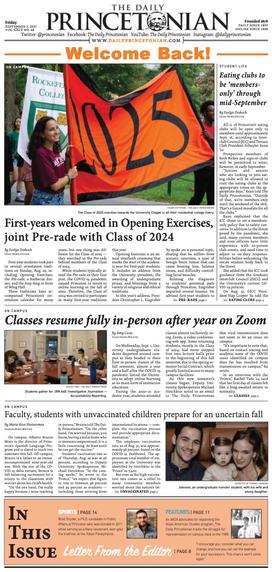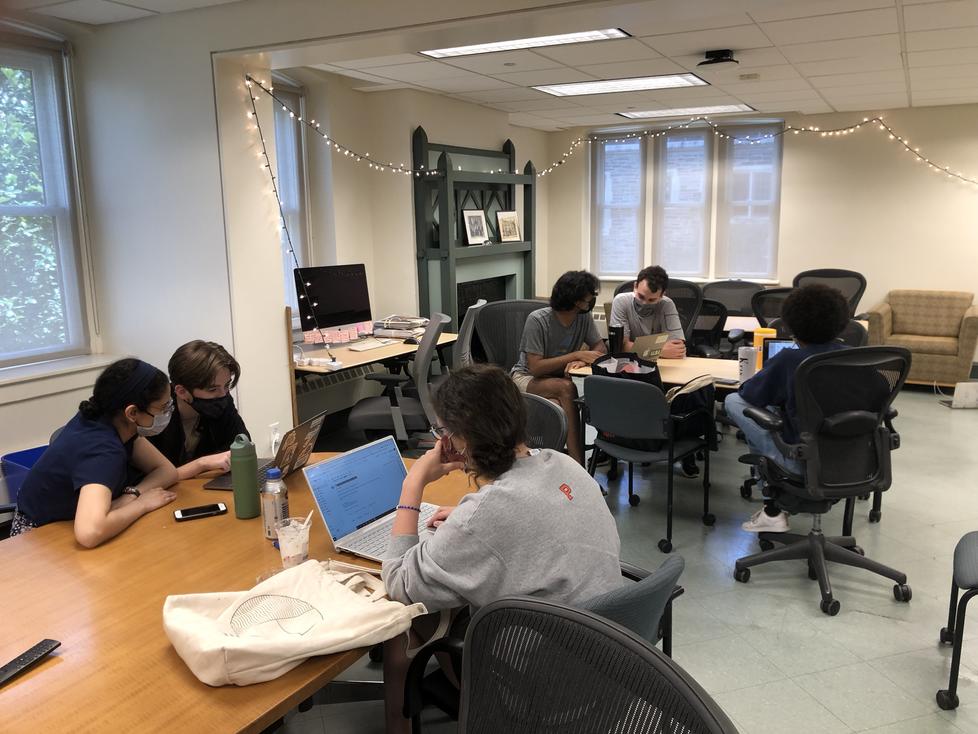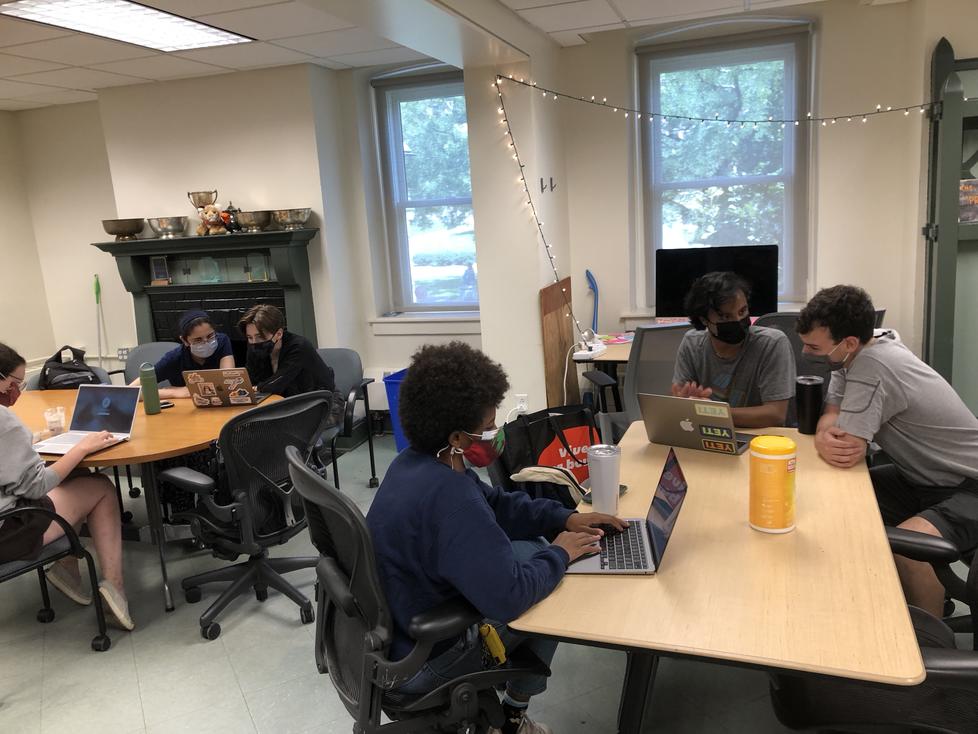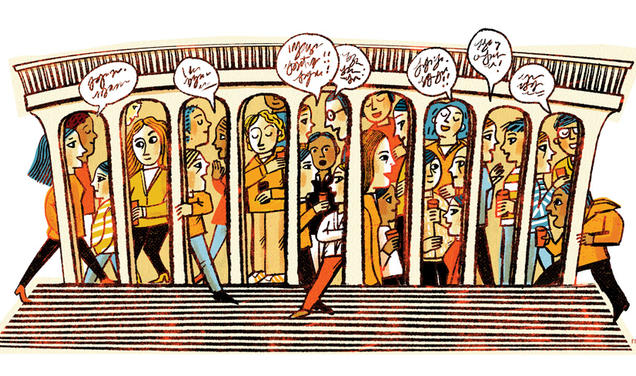Princetonian Drops Daily Print Issues, Shifting Online
‘The pandemic’s been like a catalyst,’ said Editor-in-Chief Emma Treadway ’22

Nearly three semesters and a global pandemic ago, the Daily Princetonian newsroom at 48 University Place bustled with a nightly hustle before print deadlines. From 6 p.m. until well past midnight, staffers got together to prune each story, column by column, page by page, quilting together the next day’s paper for delivery before breakfast.
Returning from over a year of remote reporting and publishing, the Prince announced it will retire its daily print papers and instead publish “digital daily, print weekly.”
“This shift to digital publishing has been something we’ve been discussing for a while, and the pandemic’s been like a catalyst,” said Editor-in-Chief Emma Treadway ’22. “After going virtual during the pandemic, we’ve really had the time and flexibility to embrace new possibilities and initiatives in the digital world, and I wanted us to think more about how we’re engaging our readers and whether we’re using the best medium to reach out to them.”
Student publications around the country had been grappling with changing reader habits, falling readership, and struggling finances before the disruptions of COVID. The Columbia Daily Spectator and The Cornell Daily Sun ceased daily print in 2014 and 2016 respectively; The Brown Daily Herald, The Dartmouth, and The Daily Pennsylvanian recently announced they will continue the reduced print schedules they adopted during the pandemic. According to Louis Aaron ’23, business manager of the Prince, financial considerations played a large role in conversations about reducing print issues in the past but were not the primary factor in the most recent decision.
In the past year and a half, the Prince has covered the uncertainties of virtual learning, campus public-health guidelines, and grading policies. For Zack Shevin ’22, one of four managing editors, the shift to digital publishing and weekly printing provides more flexibility and room for these important stories than the print paper previously allowed.
“In some sense, our level of what we would consider newsworthy rose — going from covering lectures to covering a global pandemic — and it’s been helpful for the news team to be intentional and create content that people want to read,” Shevin said, adding that the new schedule provides “space to breathe and really think about how we cover these important events.”

Several new teams were created while the Prince was publishing remotely, including content strategy and digital design. “Before, the design team was just laying out the print issue, whereas now, design is involved not just at the end but throughout the process of writing a story, even in the very beginning,” said Harsimran Makkad ’22, a managing editor and former head design editor.
The Prince, which has published daily since 1892, will continue to post new content daily, including news and sports, podcasts, videos, and puzzles. “We’re not in any way abandoning print,” said Omar Farah ’23, the inaugural content strategist. “We’re still really focused on our weekly physical product. But we understand that it’s not just us that’s changing, and we’re adapting in general to the way that people interact with the news.”













2 Responses
Citlali Bacmeister ’84
3 Years AgoConnecting With Print
I read with a mix of emotions about the decision to publish The Daily Princetonian on paper once a week, while continuing daily online publication (On the Campus, October issue).
Online reading now seems the default mode, not just for newspapers but for most printed material. Electronic print brings convenience, beyond being cheaper to produce. Paper, due to the finality of its finished version, requires human labor that e-copy does not. E-copies, further, allow for publication of a wider berth and distribution of stories since the physical constraints of a “page” do not matter online.
Yet, succumbing to the convenience of reading online has its costs: We lose not just the tactile connection to the paper, but also the privacy of reading without being tracked. And though paper newspapers and e-newspapers are both mediums that provide news, paper allows more time to think, consider, and reflect, in private, while e-versions bombard us with immediacy — get it now, respond now, have your interests and responses tracked, in the blink of an eye. Perhaps e-versions are more precisely up to date. But what, really, do we lose if we disconnect for an evening and discover new developments in the morning?
I imagine the decision to print even a weekly paper version of the Prince is a sort of principled stand to avoid a complete subsummation of “paper news” to the ether.
I am mailing this letter via snail mail, though it will be “late.”
Michael F. Brown ’72
3 Years AgoMemories of Addressing the Prince
I note with a touch of nostalgia the news that the Daily Prince is abandoning daily print (On the Campus, October issue). As a student receiving significant financial aid, I worked a number of different jobs at Princeton, but the best-paying of all of them required me to address 700 copies of the Prince and deliver them to the Princeton post office by 7 a.m. for same-day local delivery. That meant a 5 a.m. wake-up five days a week and a long walk to the paper’s print shop off Palmer Square.
In that precomputer era, I stamped the papers using embossed aluminum address cards racked up in a simple press called the Addressograph, a device invented in the 1890s. Once I got to know the postal workers, they were kind enough to cut me some slack when I was running late, which I saw as the solidarity of fellow working stiffs. The early rise was a challenge after late-night bull sessions with classmates, but the pain was offset by the magic of walking the gorgeous, silent campus in fresh snow or the dim light of dawn. Times change, and I’m confident that the paper’s shift to online publishing is the right thing to do.